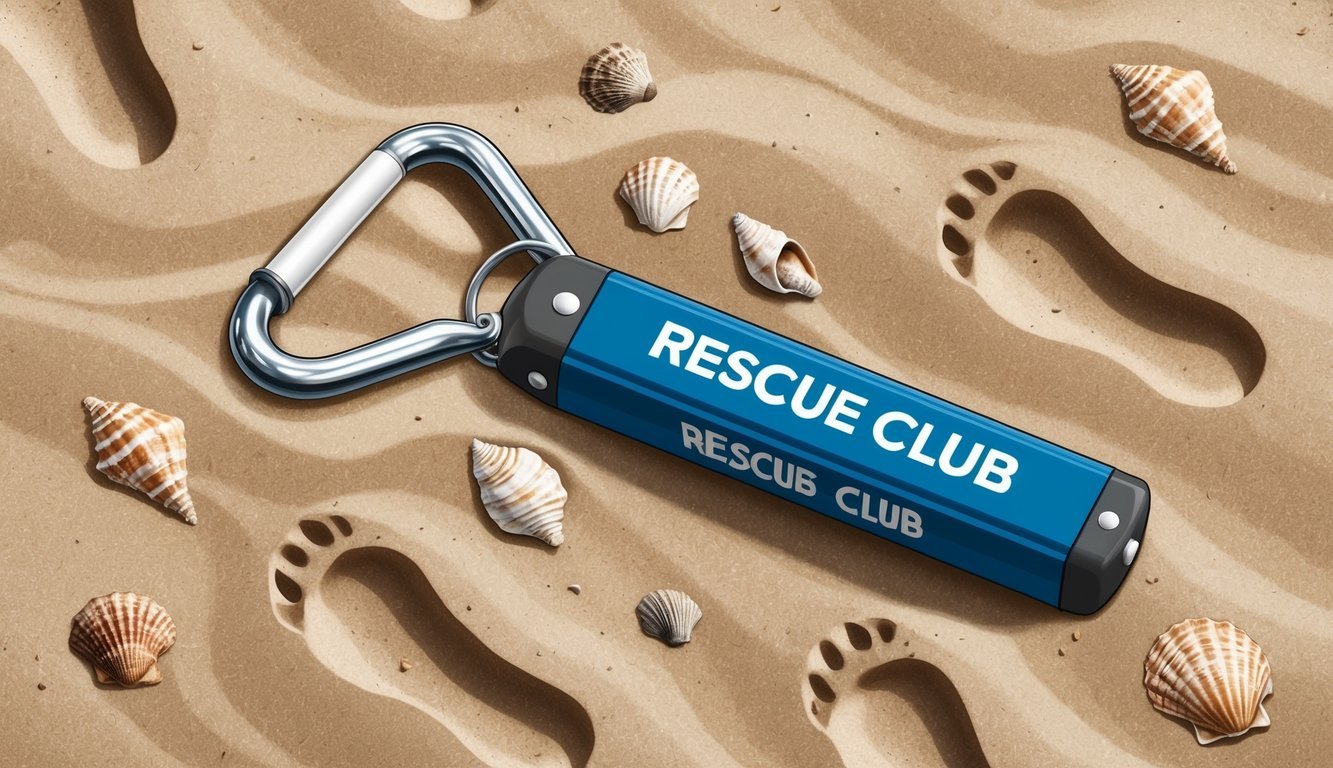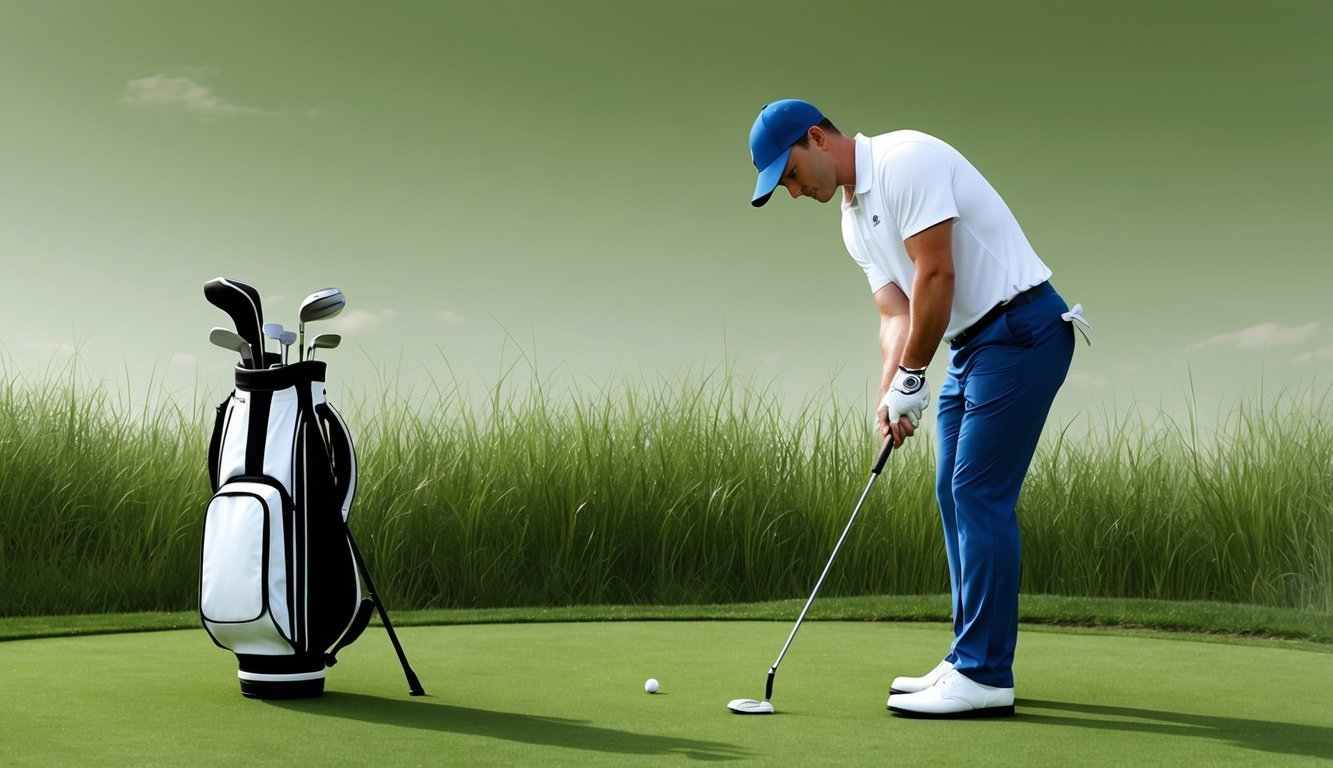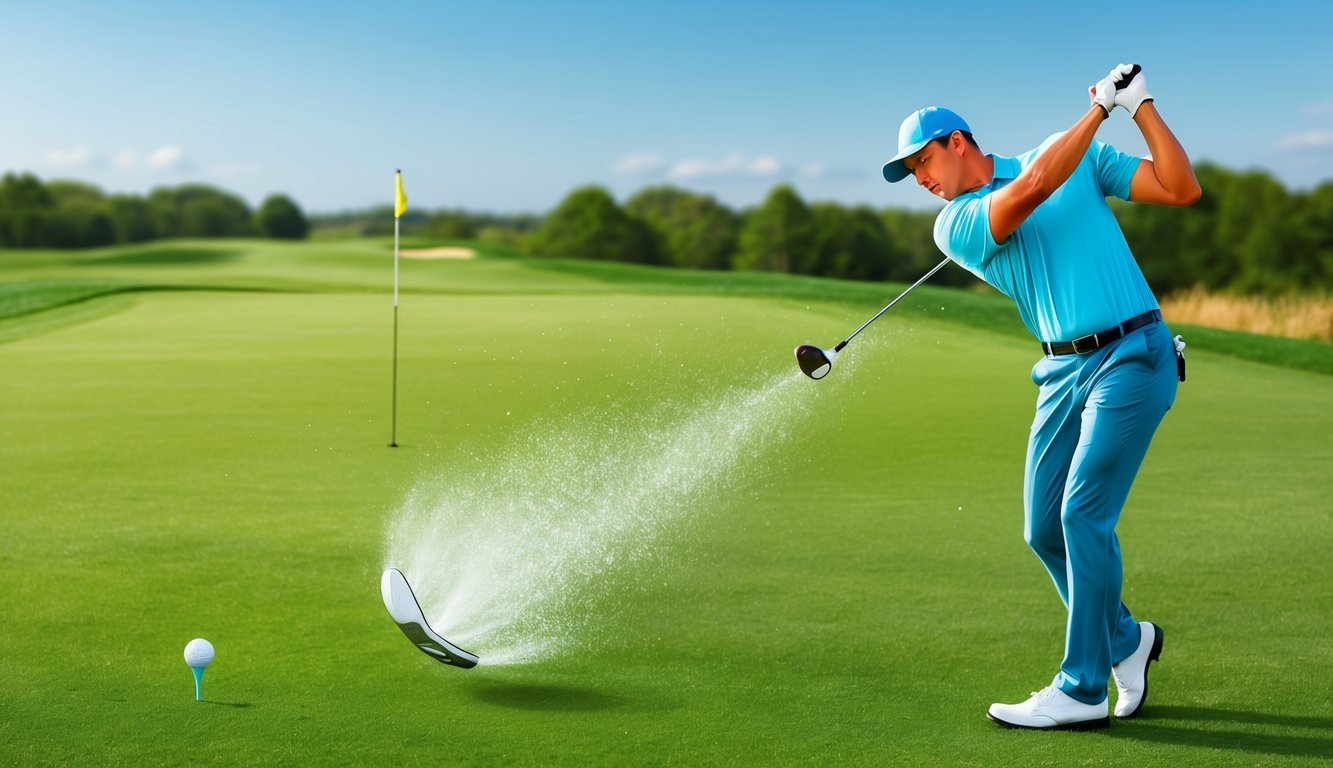Looking to elevate your golf game with versatility and precision? You might find the rescue club to be the key to transforming your experience on the course.
This club, often referred to as a hybrid, is designed to provide the perfect blend of iron and fairway wood characteristics.

A rescue club excels in challenging situations by offering higher, more forgiving shots that can navigate the rough or fairway with ease. Its unique construction—long and hollow with a conducive head shape—makes it an ideal choice for many golfers looking to improve their tactical play.
Whether you’re in the thick rough, a fairway bunker, or approaching the green, the rescue club can be your reliable companion.
When considering your next purchase, it’s essential to choose a rescue club that matches your skill level and playing conditions.
With numerous popular options available and specific features in clubs like the Qi10 Rescue, understanding what suits you best can transform your golfing experience.
Key Takeaways
- Rescue clubs combine elements of irons and fairway woods for improved performance.
- They are most beneficial in difficult situations on the golf course.
- Selecting the right rescue club can enhance your overall game strategy.
Understanding the Rescue Club
Exploring the rescue club will help you see its value in challenging golfing scenarios.
Its blend of features from irons and woods makes it a versatile addition to your golf bag.
Understanding its benefits will enhance your gameplay.
What Is a Rescue Club?
A rescue club, often called a hybrid or utility club, bridges the gap between irons and woods.
It combines the long iron’s control with the fairway wood’s ease of use.
Developed in the late 1990s, it was designed to address the difficulties golfers faced with long iron shots.
Rescue clubs usually have a higher loft than standard irons, making them effective in various situations, such as getting out of thick rough or fairway bunkers.
Their forgiving design ensures consistency even on off-center hits.
The clubhead is slightly larger, providing a greater sweet spot.
The shaft length typically matches that of an iron, which helps improve accuracy.
This combination of features makes the rescue club an essential tool, especially for golfers seeking better performance despite challenging course conditions.
Benefits of Adding a Rescue Club to Your Golf Bag
Incorporating a rescue club into your golf bag offers several advantages.
Its versatility allows you to tackle various lies and conditions, from heavy rough to tight fairways.
This adaptability provides you with more strategic options during your round.
The club’s forgiving nature enhances your ability to achieve consistent shots, reducing the impact of mishits.
Because it combines elements of both woods and irons, it offers a balance of distance and control, making it valuable for players of all skill levels.
The tailored design also assists in achieving a higher ball flight, which can be crucial during longer approach shots.
By integrating a rescue club, you expand your choice of clubs, equipping yourself to handle diverse golfing challenges with confidence.
When to Use a Rescue Club

Rescue clubs, also known as hybrids, are versatile tools in a golfer’s bag, helping you tackle a variety of challenging situations on the course.
Whether you’re dealing with long approach shots or tricky lies, knowing when to use a rescue club can make a significant difference in your game.
Approach Shots and Long Par 3s
When facing an approach shot or a long par 3, a rescue club provides an excellent alternative to longer irons.
Rescue clubs offer a combination of distance and loft, making them ideal for achieving the necessary height and precision.
These clubs work well on long shots where accuracy and control are pivotal.
Whether the shot requires navigating past trees or avoiding bunkers, the design of a rescue club helps provide a higher launch angle.
This can be particularly beneficial in windy conditions, allowing you to better control the ball’s flight.
For long par 3 holes, where getting on the green is crucial, a rescue club’s forgiving nature can be advantageous.
Tee Shots and Par 4s
For certain tee shots on par 4 holes, you might find that driver accuracy is a concern.
A rescue club can be a suitable alternative, offering greater control without sacrificing too much distance.
This can be especially important on tight fairways where precision outweighs sheer power.
Using a rescue club from the tee can help you avoid hazards like fairway bunkers or out-of-bounds areas.
Its versatility shines when navigating doglegs or when a strategic position in the fairway is needed.
Thus, a rescue club can be a smart choice for both beginners and seasoned golfers looking to enhance their shot accuracy from the tee.
Navigating Difficult Lies and Hazards
A rescue club excels at navigating difficult lies and hazardous situations, such as roughs or sand traps.
Its unique design enables you to cut through thick grass and make solid contact with the ball in tricky situations.
This makes it easier to recover from potential trouble spots on the course.
When confronted with a tight lie or a fairway bunker, the forgiving nature of a rescue club helps you maintain control.
The club’s design aids in lifting the ball more easily than an iron, reducing the risk of stubbing or digging into the ground.
So, when you’re in a tough situation, a rescue club can be your go-to option for success.
Choosing the Right Rescue Club
Selecting the right rescue club involves understanding various factors that influence its performance.
These clubs can bridge the gap between woods and long irons while offering increased control and forgiveness.
Lofts and Distance
When picking a rescue club, lofts play a significant role in determining the distance you can achieve.
Higher lofts allow the ball to ascend quickly, making them beneficial in high grass or tight situations.
Lower lofts are useful for longer distances and penetrating ball flights.
It’s essential to consider your usual playing distance to choose a loft that complements it.
A well-chosen loft can help replace long irons effectively.
For detailed insight into lofts, you might find this guide on golf rescue clubs useful.
Head Design and Clubface Features
The design of the clubhead greatly influences performance.
A larger head often provides more forgiveness and makes getting under the ball easier.
Clubface features like grooves can affect spin and control.
Some designs offer adjustable features to help you tweak your game as needed.
Positioning the center of gravity lower can assist in higher ball launches.
Understanding these elements will help you tailor your choice to improve your performance.
Shaft Length and Swing Speed
The shaft length should match your swing speed and playing style.
Longer shafts can increase distance but may compromise control if not suited to your technique.
Players with a faster swing speed might opt for stiffer shafts to gain accuracy and control.
Conversely, those with a slower swing might benefit from a more flexible shaft to add distance.
Balancing these factors can optimize your play, contributing to better swings on the fairway.
Improving Your Game with Rescue Clubs

Mastering rescue clubs can significantly enhance your golf game, providing the ideal combination of distance and precision.
With proper techniques and consistent practice, you’ll find yourself navigating challenging courses with ease, making those difficult lies seem almost effortless.
Techniques for Effective Use
To harness your rescue club’s full potential, focus on a consistent swing with a sweeping motion.
This technique allows for solid contact and improved distance, ensuring the club’s sweet spot meets the ball accurately.
A well-balanced stance is crucial—position your feet shoulder-width apart for optimal stability.
Your grip should be firm yet relaxed, allowing for better control and precision.
Pay attention to your alignment, as it influences your shot’s direction significantly.
Aim to flow seamlessly through your swing, maintaining balance throughout.
Practicing these techniques will help refine your ability to use rescue clubs effectively, enhancing both accuracy and control on the course.
Practice Drills for Better Consistency
Incorporating specific drills into your routine is critical for better consistency with rescue clubs.
Begin with target practice by setting up markers at varied distances to challenge your precision and control.
This drill enhances your ability to focus on different targets during a game.
Next, practice your swing speed.
Take a series of swings, gradually increasing the speed without losing form.
This helps develop the consistent rhythm needed for a sweeping motion.
An additional drill is the lie adjustment, hitting from different terrains to simulate real course conditions.
By practicing from sand, rough, and fairway lies, you improve your adaptability and solid contact under diverse circumstances.
These exercises are instrumental in building confidence and improving your game with rescue clubs.
Popular Rescue Clubs on the Market

In the world of golf, rescue clubs are essential for improving your game by offering versatility and forgiveness.
Several key brands stand out due to their unique designs and innovative features that cater to both beginners and seasoned players.
Top Brands and Their Offerings
When exploring rescue clubs, you’ll find that brands like Callaway, TaylorMade, and Ping dominate the market.
Callaway’s King Tec series is known for its impressive balance and playability.
TaylorMade offers the Qi10, which is tailored for average-speed players and those who prefer a larger head shape for added confidence.
Meanwhile, Ping’s G410 is celebrated for its precision and adaptability, making it a favorite among both amateurs and pros.
Understanding these products and their benefits can guide you to the right choice for your playing style.
Features that Stand Out
Popular rescue clubs have a forgiving nature, perfect for addressing tricky lies or challenging shots. Cleveland’s Launcher Halo Hybrid is renowned for its wider sole, which aids in smoother interactions with the turf.
This feature is particularly useful when you’re trying to navigate through rough patches.
Moreover, hybrid golf clubs often incorporate versatile designs, offering options to adjust the loft and optimize your swing.
These clubs typically highlight innovative materials that enhance ball speed and distance, ensuring you get the most out of every swing.
Considering these features ensures you select a club that meets your specific needs, enhancing your overall-game performance.

